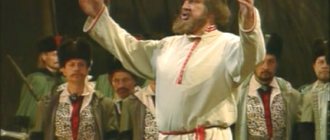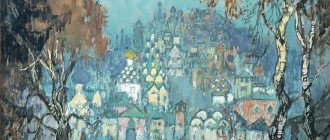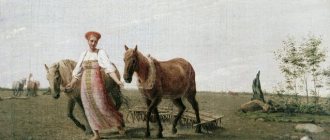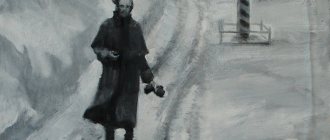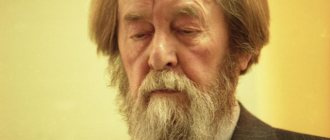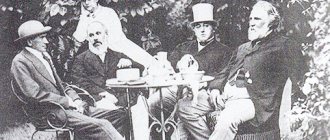- Reports
- People
- Susanin Ivan
Ivan Susanin (mid-16th century-1613) is one of the Russian national heroes who accomplished a feat during the war between Russia and the Poles.
Susanin is a native of the Kostroma province and is born into a peasant family of serfs serving in the noble Shestov family.
According to existing legends, Susanin fulfills the duties of a patrimonial headman, having a married daughter with grandchildren. There is no information regarding Susanin’s wife, therefore, from the point of view of researchers, Ivan is a widower.
During the Russian-Polish War, the young Tsar Mikhail Fedorovich Romanov, who recently ascended the imperial throne, finds himself on the territory of Kostroma, along with his mother nun Martha. This news inspires the Poles to attempt to find the whereabouts of the Russian Tsar in order to capture him. Near the village of Domnino, the Polish detachment meets with Ivan Susanin, who, according to the invaders, has the opportunity to indicate the direction of the location of the royal family. Despite cruel torture and bullying, Ivan Susanin does not reveal to the Poles the whereabouts of the young sovereign. At the same time, the hero himself dies at the hands of enemy invaders, being hacked to death.
A few years later, the relatives of Ivan Susanin, represented by his son-in-law Bogdan Sobinin, receive a royal charter, which grants them part of the village and exempts them from paying established taxes and duties. This document is issued to Susanin’s relatives in connection with the rescue of the Tsar from Polish captivity at the cost of Ivan’s life.
The nationwide fame of Ivan Susanin’s act comes after the visit of Empress Catherine II to Kostroma, as a result of which the peasant becomes the official savior of the founder of the royal dynasty and the ideal of a national hero.
Since these times, the description of Ivan Susanin’s feat has been included in the curriculum of many schools and gymnasiums, and also becomes the basis for a number of musical, pictorial and literary works that are now classical.
By decree of Nicholas the First, the central square of the provincial city of Kostroma receives the name Susaninskaya and a monument is erected on it in memory of the national hero, destroyed during the October Revolution.
However, among historians there is a version that refutes the feat of Ivan Susanin, since, according to researchers, the Kostroma resident dies not as a result of capture by the Polish army, but at the hands of ordinary bandits who traded at that time.
Option 2
Ivan Susanin is considered a Russian hero who saved Mikhail Romanov. This happened during the war between the Russians and the Poles.
There is little information about the biography of Ivan Susanin. He was a peasant, originally from the village of Domnino (currently Susaninsky district, Kostroma region). According to some historical data, he was the headman in the village and belonged to the Shestov court. Marital status is also not indicated. It is known that there was a daughter of Antonida. Most likely the peasant was a widower.
He committed his heroic deed in 1613. During these times, the newly christened Tsar Mikhail Romanov and his mother Martha took refuge in Kostroma. The Poles wanted to find them and capture them. On the way they met Ivan Susanin. They tried to find out where the king was hiding. The patrimonial elder was cruelly tortured, but he was betrayed to the king and did not tell his whereabouts.
Diafon.ru
Mikhail Ivanovich Glinka (1804-1857) - founder of the Russian school of composers, whose works had a huge influence on the formation of Russian classical music and the creative path of his followers-composers, among whom are A. P. Borodin, A. S. Dargomyzhsky, N. A Rimsky-Korsakov, M. P. Mussorgsky, P. I. Tchaikovsky and many others. The outstanding music critic V. Stasov compared the significance of Glinka’s work for Russian music with the significance of A. S. Pushkin’s work in literature. History of creation Glinka's opera “Ivan Susanin” is one of the first Russian operas. The composer began writing a patriotic work on the advice of the poet V. Zhukovsky. The content is based on the feat that was accomplished by the Kostroma peasant Ivan Susanin. The image of Susanin meant the Russian people who heroically fought against Napoleonic troops.
Life for the Tsar
They grabbed the peasants they came across and forcibly extorted the place where Mikhail Romanov was hidden. The headman of the village of Domnino, Ivan Susanin, sent his son-in-law to transport the young king to a more reliable place, and he himself volunteered to be a guide for the Poles. For a long time he led them along remote forest paths and led them to the impassable Isupovsky swamp. When it became clear to him that the Poles would not be able to organize a pursuit, he admitted that he had deliberately led them in the wrong direction.
feat of Ivan Susanin photo
Enraged enemies hacked Ivan Susanin to death on the spot and tried to get out on their own. But time was already lost. Envoys from the Zemsky Sobor were the first to meet Mikhail Romanov and Russia received a legally elected Russian Tsar. The time of unrest and lawlessness in Rus' is over.
One more step
The winter night drags on languidly. The dark forest groans and hums. Susanin lost himself in a short sleep. The Poles wake up, wake up Susanin, demand an answer: where has he led them? “Where you will die from a fierce blizzard,” answers Susanin, “where you will die of starvation.” With the name of his homeland on his lips, the national hero dies under the blows of enemy sabers.
Epilogue Red Square at the Frolovsky (Spassky) Gate of the Kremlin. The people rejoice. A mighty choir sounds. “Glory, glory to you, my Rus', glory to you, our Russian land! May our beloved country be strong forever and ever!” Minin and Pozharsky leave the Kremlin.
Source
Other characters
- Antonida's fiancé, militiaman.
- leader of the liberation movement.
Act one
Bogdan, together with other young and strong peasants, join the people's militia. After a while, he brings home the good news - the peasant Minin from Nizhny Novgorod is gathering a great squad to defeat the Poles and liberate the capital from the invaders.
Antonida and Bogdan turn to Ivan Susanin to give a blessing for their wedding, but the old man refuses the lovers’ request: “Nowadays there is no time for weddings. It's battle time!
Act two
Meanwhile, Sigismund III throws a luxurious ball in honor of his victory. Inspired by military success, the Poles are looking forward to a heavenly life at the expense of looted wealth.
During the general rejoicing, the ambassador brings bad news to the king. The Russians, led by Minin, resist the Poles. The Polish detachment is besieged in Moscow, and the remaining army flees in panic.
Act three
Vanya makes himself a wooden spear, dreaming of growing up quickly and defending his homeland. Susanin enters the hut and reports that Minin and his retinue have set up camp nearby in the forest.
Bogdan and Antonida are busy preparing for their long-awaited wedding. Peasants come to the Susanins' house to congratulate the future newlyweds. When the guests leave, Polish soldiers suddenly burst into the hallway and demand the old man to take them to Minin.
At first, the peasant refuses, but then an insidious plan matures in his head - to deceive the Poles into the wilderness of the forest and destroy them there. He quietly instructs Vanya to rush as quickly as possible to the militia and warn of the danger, while he himself leads the enemies into the forest.
When Antonida’s friends come to the hut, the tearful girl tells them about the misfortune that has happened. Bogdan and the peasants go to help Susanin.
Act four
Late at night, Vanya resorts to the militia and informs Minin about the Polish attack. The alarmed warriors immediately prepare to go on a campaign.
Tired Poles suspect something is wrong. They ask Susanin where he took them, to which the brave peasant replies that he took them to a place where they would have to “die by starvation.” In anger, the Poles kill Susanin.
Epilogue
Jubilant crowds of people rush to Red Square, church bells deafen the area with festive ringing. Among the joyful people, the sad ones Antonida, Bogdan and Vanya stand out.
One of the warriors asks about the reason for their sadness, to which Vanya tells him about the heroic deed of his father. The soldiers console the boy with the words: “Ivan Susanin will live forever in the people’s memory.”
The people welcome the appearance of their heroes - Minin and Pozharsky, and sing songs of praise addressed to them.
Prehistory of the feat of Ivan Susanin
The ascension to the Russian throne was preceded by the Time of Troubles. The country was on the brink of destruction. The absence of a legitimate king for a long time threatened the loss of statehood. After the death of the eternal enemies of the Russians, the Poles wanted not only to seize nearby lands, but also to seize the Russian throne.
Several self-proclaimed False Dmitrys, who were encouraged and supported in every possible way by the Polish-Lithuanian Commonwealth, laid claim to the Russian throne. The capital and several large cities were in the hands of the enemy. It got to the point that most of the boyars agreed to place the Polish king on the Russian throne. But the Russian people decided to defend their state.
Under the leadership of Kuzma Minin and Dmitry Pozharsky, a people's militia was assembled and in the fall of 1612 a decisive event occurred that put an end to the Polish intervention. On November 4, the Poles were finally expelled from Moscow.
The General Zemsky Sobor elected sixteen-year-old boyar Mikhail Romanov as the new tsar. He was not in Moscow at that time. He fled from the Kremlin captured by the interventionists to his estate near Kostroma. This was the village of Domnino. It was in the forests.
His mother Marfa Ioannovna entrusted her son to the village headman Ivan Susanin and his son-in-law Bogdan Sobinin. She settled in the vicinity of the Makaryev-Unzhensky Monastery.
Brief biography of Ivan Susanin
The feat of a Kostroma peasant
Historians claim that Susanin was the headman in the village of Domnino, Kostroma district. The interventionists from Poland did not know the way to the village where the tsar was, and asked Susanin how to get there. Ivan Osipovich volunteered to personally escort them to Domnino. The Poles promised to reward him for this. The future national hero, instead of the village, led them to a huge, impenetrable forest, which he himself knew like the back of his hand. The Poles realized that the village elder had deceived them and led them into the forest to destroy them. They were beside themselves with anger and killed the peasant. However, they themselves soon disappeared into the swamps located in the forest.
It is believed that this event occurred in 1612, in the fall. There is some evidence to support this date. Legends say that Susanin hid Mikhail Romanov in a hole where a barn had recently been burned, and disguised the hole with charred boards. In the 17th century, barns were burned in late autumn, so if the story about the pit is true, the date of the event is correct. Although many researchers still reject this theory.
Susanin's personality
Death of a Hero
There are 2 versions regarding Susanin’s death. The first, most common version, says that he died in the forest, in the Isupov swamps. The second is that he died in the village of Isupovo itself. This version is the most truthful, as it is confirmed by documents. The fact is that Susanin’s great-grandson went with a petition to Empress Anna Ioannovna to receive special benefits, since he was his descendant. To prove this, he cited the death certificate of his great-grandfather, where this village was indicated.
Ivan Osipovich Susanin was buried in the Ipatiev Monastery.
In conclusion, I would like to say that Susanin is a noble man who can serve as an example for his contemporaries. His name has not been forgotten to this day. Schoolchildren are told about his feat. Yes, the history of our country contains many heroes, and one of them is the peasant elder, Ivan Osipovich Susanin.
For children 3, 4, 5, 7 grades.
Biography by dates and interesting facts. The most important.
Other biographies:
Elena Gadzhievna Isinbaeva was born on June 3, 1982. As a little girl, she attended a gymnastics sports section. Simultaneously with the physical education school, he receives an education at a lyceum with a technical focus.
Dokuchaev Vasily Vasilievich. Born on February 17 (March 1), 1846, died on October 26 (November 8), 1903. One of the most famous soil scientists, geologist, professor of mineralogy and crystallography at St. Petersburg University.
On July 10, 1856, in the small village of Smilyan, in Austria, a boy was born into the family of a clergyman, who was named Nikola. Nikola was born the fourth of five children of the Tesla couple.
On January 15, 1850, in Moscow, a girl, Sophia, later Kovalevskaya, was born into the wealthy family of Vasily Korvin-Krukovsky and Elizaveta Schubert.
The real name of the boy, born on March 31, 1882 in St. Petersburg, was Nikolai Korneychukov, and he received the middle name Vasilyevich thanks to his godfather. His mother, a peasant woman from Poltava, later moved with her son to Odessa
Source
Ivan Susanin is a simple Russian man who became a hero in the eyes of the entire people after saving Mikhail Romanov from the Poles during their war with the Russians.
Unfortunately, not much is known about Ivan Susanin himself and his life. He was from a simple peasant family, born and lived in a village called Domnino. Today this place is located in the Kostroma region, Susaninsky district. In some of their notes, historians noted that Ivan was the headman of his village. According to unconfirmed reports, Susanin was a widower and had an adult daughter named Antonida.
The heroic deed of a simple peasant Ivan Susanin became known to the people in 1613. At this time, Mikhail Romanov, who had just ascended the royal throne, was with his mother in the city of Kostroma. The Poles, having made their way into the city, tried to find and capture them. But to their misfortune, Ivan Susanin appeared on their way. Having caught the peasant, they began to force and torture the man to tell them the secret of the whereabouts of the newly-crowned king. But Ivan turned out to be a devoted man, and under no pretext did he tell them where Mikhail was hiding.
Later, in 1619, the relatives of Ivan Susanin were given a royal letter, which stated that the king would give them ownership of half the village and exempt them from taxes. Then, after more time, the same letters of dust were written and issued to the descendants of the peasant hero with the same words of gratitude and exemption from taxes.
Historical sources and chronicles of the 17th century could tell little about the heroic deed of Ivan Susanin. People created a small legend and passed it on from mouth to mouth to a new generation. But the visit of Empress Catherine II to Kostroma marked the beginning of a new plausible story about the Russian peasant Ivan Susanin.
Gradually, the historical feat of Ivan Susanin began to be described in school history textbooks. But the greatest interest in this feat arose during the reign of Tsar Nicholas I. Ivan Susanin was officially proclaimed a hero, they began to devote a large number of poems and songs to him, and they also wrote an opera.
In order to forever imprint in the memory of future descendants the image of an ordinary peasant, a true hero and a fearless person, in 1838, by royal decree, it was ordered to erect a monument to Ivan Susanin on the central square in Kostroma.
But there were also those who denied the feat of Ivan Susanin. Some learned historians agreed that the man became another victim of the robbers operating near Kostroma at that time.
During the October Revolution, the monument was partially destroyed, since Susanin was considered a servant of the tsar. But in 1938 he was again recognized as a hero, but at a higher political level. His name became the new name of the regional center in which he lived - Susanin.

